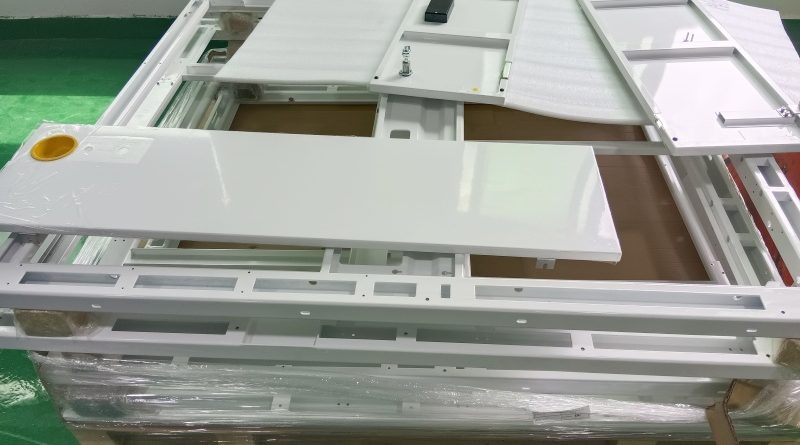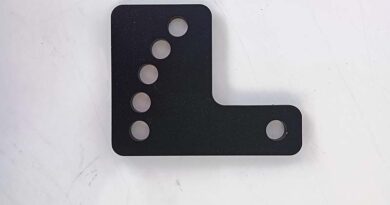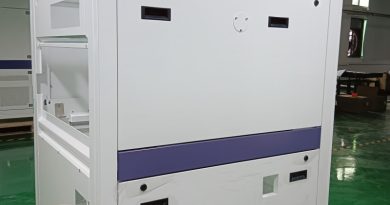What are the disadvantages of powder coating?
While powder coating offers many advantages, it also comes with some disadvantages. Here are the key drawbacks of using powder coating for sheet metal or other materials:
1. Initial Setup Cost
- High Initial Investment: The equipment required for powder coating, such as electrostatic spray guns, curing ovens, and proper ventilation, can be expensive. This makes the initial setup cost relatively high, especially for small-scale operations.
- Specialized Facilities: Curing the powder coat requires large industrial ovens, limiting its feasibility in smaller workshops without this infrastructure.
2. Thickness Control
- Limited Control Over Thin Coatings: Powder coating generally results in thicker coatings compared to liquid paint. Achieving a very thin or precise coating thickness can be difficult. This can be a drawback for applications where tight tolerances or a thinner finish are required.
- Potential for Orange Peel Texture: If not applied or cured properly, powder coatings can result in an uneven “orange peel” texture, which may not be desirable for high-end finishes.
3. Color Matching Challenges
- Difficult to Match Colors Exactly: Unlike liquid paints, where precise color matching can be achieved with ease, powder coatings can be more difficult to match exactly. Once a batch is mixed and applied, reproducing the exact color and finish in future batches can be challenging.
- Incompatibility with Some Color Effects: Certain finishes, such as metallics or highly glossy finishes, can be harder to achieve or may not appear as consistent as with liquid paint.
4. Difficulty with Touch-Ups and Repairs
- Challenging to Repair: Unlike liquid paint, powder-coated surfaces can be difficult to touch up if damaged. Small chips or scratches usually require the entire part to be stripped and recoated rather than simply touching up the affected area.
- Non-Reversible Process: Once powder-coated, the finish cannot be removed or changed without significant effort, such as sandblasting or chemical stripping.
5. Curing Requirements
- Heat-Sensitive Materials: The curing process requires the coated parts to be heated to high temperatures (typically around 350-400°F). This makes powder coating unsuitable for materials that cannot withstand these temperatures, such as certain plastics or composites.
- Energy Consumption: The curing process can also be energy-intensive, which may increase operational costs, particularly in large-scale production.
6. Complexity in Coating Large or Intricate Parts
- Large Part Limitation: Powder coating is best suited for smaller to medium-sized parts that can fit inside a curing oven. Larger parts or assemblies that cannot be easily moved or heated may be difficult to powder coat effectively.
- Challenging for Complex Geometries: Powder coating can struggle with covering intricate or complex shapes evenly, especially if there are deep recesses, sharp corners, or hidden areas. Achieving complete coverage in these areas may require additional effort and can result in uneven coatings.
7. Environmental and Safety Concerns
- Powder Disposal: While powder coating is generally more environmentally friendly than liquid paint, unused or oversprayed powder must still be disposed of properly. In some cases, this can present environmental and safety concerns.
- Health Risks: Although powder coatings are free of solvents, inhalation of the fine powder particles during application can pose health risks, requiring the use of protective equipment like masks and proper ventilation.
8. Limited Substrate Compatibility
- Substrate Preparation: Powder coating requires a clean, well-prepared surface for proper adhesion. Materials that are difficult to clean or prepare (e.g., certain metals or previously coated surfaces) may not be suitable for powder coating without extensive preparation.
While powder coating offers many advantages, these disadvantages can affect its suitability for specific projects. Careful consideration of the material, design, and application requirements is essential before opting for this coating method.
Click sheet metal fabrication company china or china sheet metal forming manufacturers to learn more about sheet metal fabrication services.
For all your electrical enclosures from China, contact china sheet metal fabrication factory JIATONG now.
From Sheet Metal Fabrication Companies in China, china sheet metal fabrication manufacturers, china sheet metal fabrication companies – JIATONG




